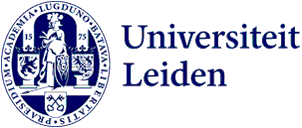Astronomy: Astronomy and Science Communication and Society
Structure of the Programme (120 EC)
The Science Communication and Society (SCS) specialisation concerns science communication in a broad sense. It prepares students for a career in popularisation of science, for example, as a science communicator, a science policymaker or a public relations officer, or for a career as a scientist with a communicating mind-set. The 2-year programme consists of an Astronomy component, to be followed in the first year, and a Science Communication and Society component, to be followed in the second year:
Year 1
| Level | EC | |
|---|---|---|
| Mandatory Courses | ||
| Stellar Structure and Evolution | 500 | 6 |
| Other Astronomy Core Course | 500 | 6 |
| Electives | ||
| Non-Astronomy Courses | 400-500 | 6-12 |
| Other Astronomy Courses | 400-500 | 6-12 |
| Research Projects | ||
| Medium Research Project in Astronomy | 600 | 30 |
Year 2
| Level | EC | |
|---|---|---|
| Introductory Course | ||
| SCS Fundamentals | 400 | 19 |
| Internships/Research Projects | ||
| Research Proposal | 600 | 3 |
| Internship and Research Projects | 600 | 14-34 |
| Electives | ||
| Astronomy or SCS Courses | 400-500 | 0-10 |
Master Study Plan
At the start of the master’s programme in September, students are required to draw up a complete overview of the courses and projects they are planning to follow in the 2 subsequent academic years. This Master Study Plan needs to be approved by the Study Advisor Astronomy. To select courses, students need to consult the course list for academic year 2015-2016 (see below), and/or the course list for academic year 2016-2017 (see: Astronomy and Science Communication and Society, 2016-2017).
Learn more
For more information on the specific requirements of this specialisation, please look at:
the appendix of the Course and Exam Regulations
the SCS website.
